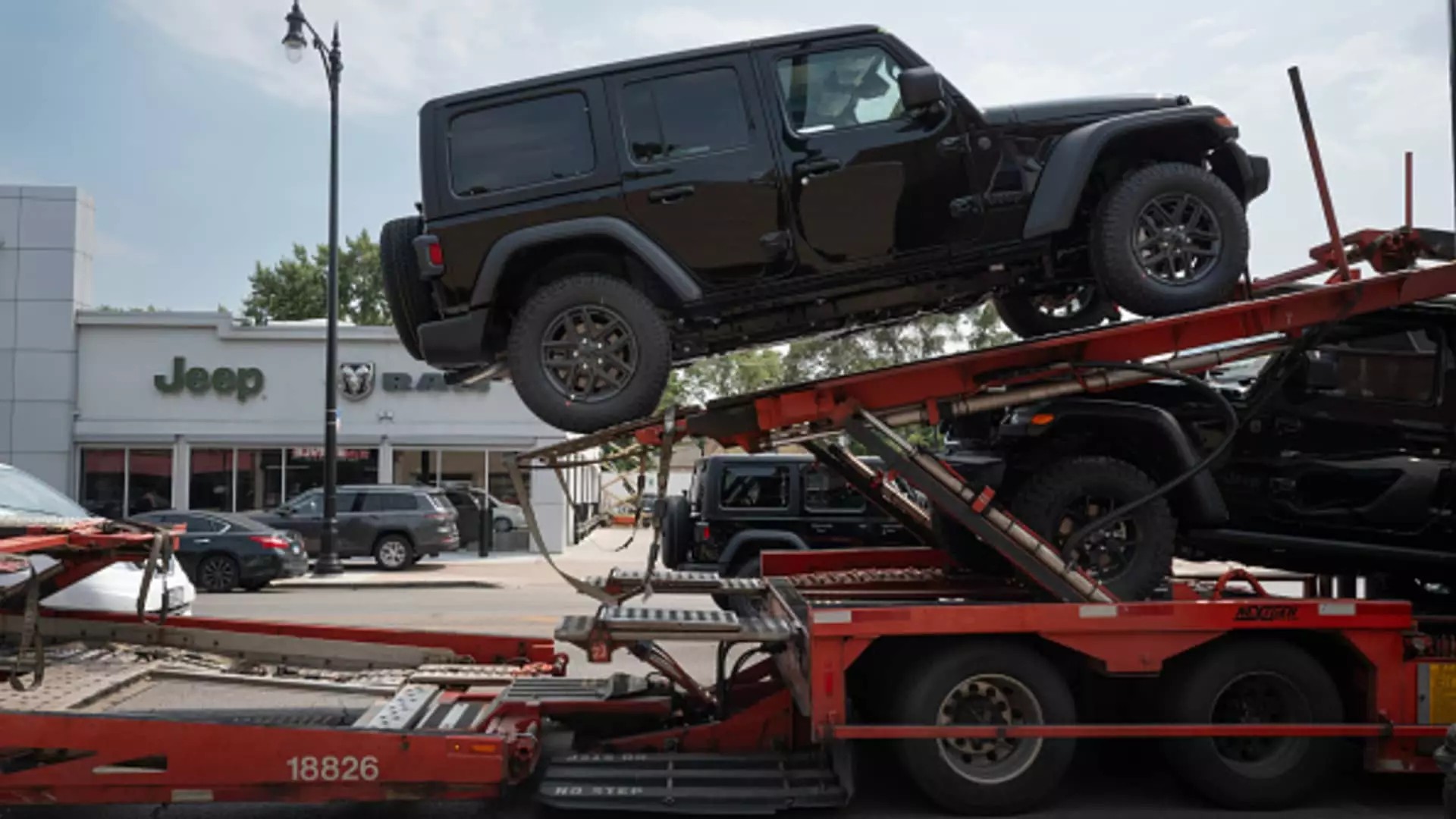Stellantis, the multinational automotive manufacturing corporation formed from the merger of Fiat Chrysler and PSA Group, is currently grappling with a significant downturn in U.S. vehicle sales. Despite efforts by CEO Carlos Tavares to rectify what he has described as “arrogant” mistakes, the company’s sales performance continues to spiral downward. The third quarter results, marked by a noteworthy decline in sales and mounting operational issues, reveal deep-rooted challenges that the company must navigate to regain its foothold in the automotive market.
During the third quarter, Stellantis reported sales figures of 305,294 vehicles from July to September. This result represents a staggering 19.8% decrease compared to the same period in the previous year, as well as an 11.5% drop from the preceding quarter. Analysts had projected Stellantis to underperform relative to its competitors, with forecasting organizations such as Cox Automotive predicting a 21% decline in sales. In contrast, the overall U.S. auto market is expected to see a decrease of only around 2%. This disparity underscores Stellantis’ struggle to keep pace with industry trends, raising serious questions about its sales strategies and market positioning.
The alarming drop in sales marks a continuation of a persistent trend, as Stellantis’ sales figures have steadily declined since peaking at 2.2 million vehicles in 2018. In 2022, the company managed to sell just over 1.5 million vehicles, reflecting a modest drop of roughly 1% from the previous year, which itself marked a considerable fall of 13%. These statistics present a concerning picture of a manufacturer that, despite operating in a market where new light-duty vehicle sales increased by 13% last year, has consistently failed to capture consumer interest and market share.
Stellantis’ struggles are compounded by a series of operational hurdles. Tavares has recently acknowledged three primary factors contributing to the company’s stagnant sales: slow vehicle inventory turnover, production issues at unspecified plants, and a lack of sophistication in market strategy. Such bottlenecks not only hinder current performance but also create a perception of inefficiency that could deter potential buyers and investors alike.
Moreover, recent difficulties have included a recall of popular plug-in hybrid electric Jeep models due to fire risks, amplifying concerns about product safety and reliability. This recall comes at a time when the company is also revising its profit margin forecasts for 2024, a worrying sign that indicates declining confidence among investors and stakeholders. The stock’s performance reflects this turmoil; shares dropped significantly, reaching a new 52-week low and down 41% overall this year.
In light of these challenges, Tavares has shifted Stellantis’s focus from expanding market share to prioritizing profitability and pricing strategies. This pivot, while anchored in fiscal prudence, has drawn criticism from various stakeholders, including the United Auto Workers union and Stellantis’ U.S. franchised dealers. The critics argue that Tavares’s approach may alienate key partners and lead to a disengaged workforce.
As Stellantis approaches the remainder of 2023 and looks into 2024, it must consider a more balanced approach that combines the drive for profits with the need to strengthen relationships with dealers and employees alike. In an industry characterized by rapid technological changes and shifting consumer preferences, adaptability will be crucial to stave off further sales declines.
Stellantis finds itself at a crossroads, faced with declining sales, operational hurdles, and a lack of confidence from investors. The company’s commitment to correct past missteps and realign its strategy is commendable, but it must demonstrate tangible results to rebuild its market presence. By addressing operational inefficiencies, enhancing product safety, and fostering stronger relationships with stakeholders, Stellantis may yet navigate its current challenges and emerge as a formidable player in the auto industry once again. The road ahead will undeniably demand agility and insight, but with focused leadership, the prospects for recovery remain viable.


Leave a Reply